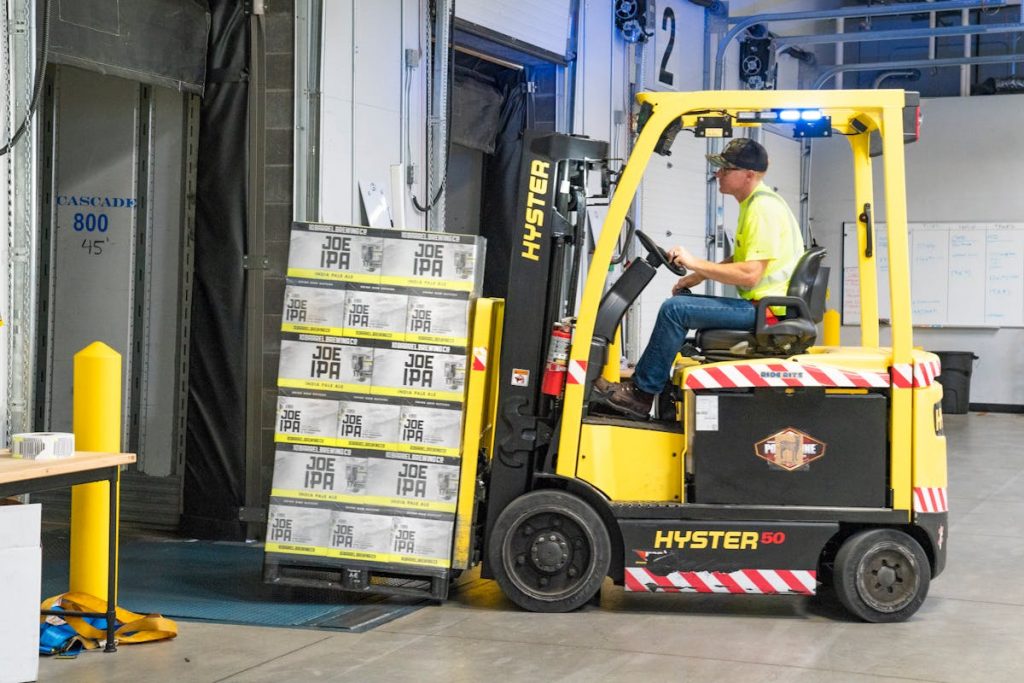- Efficiency in supply chains is driven by sustainability as companies aim to reduce waste, minimize environmental impact, and ensure ethical sourcing.
- Supply chain optimization faces challenges such as globalization, market volatility, and balancing efficiency with innovation.
- The key to overcoming these challenges lies in risk management, continuous learning and adaptability, and strategic use of tools and trends.
- By implementing these strategies, companies can build an efficient and sustainable supply chain that sets them up for future success.
In the vast and intricate economic tapestry that envelops our world, the supply chain is the thread that, when efficient, spells the difference between a thriving business and one that lags. The modern-day supply chain is a marvel of complexity and interconnectedness — a web of processes, from production to distribution to the final consumer, that spans the globe. However, the true backbone of this elaborate system isn’t merely geographic reach or meticulous deliverables; it is, instead, the strategic alchemy of logistics, innovation, and technological prowess that keeps the heart of commerce beating.
The Evolution of Supply Chain Management
The story of supply chain management is one of adaptation and evolution. Once a back-office function focused on inventory control and procurement, it has transformed into a strategic activity, integrating the entire business ecosystem. Historically, the first global supply chains emerged during the Age of Discovery, linking the old and new worlds through trade routes. Fast forward to the late 20th century, and we witnessed a shift towards integrated supply chain management that harmonized production, distribution, and procurement.
This shift set the stage for the modern supply chain by recognizing that all facets of operations are inextricably linked. It’s a triumvirate of efficiency, quality, and time and cost savings. Yet, it wasn’t until the early 21st century that the digital revolution truly reshaped these principles. Thanks to this revolution, forward-thinking businesses have leveraged technology to refine their supply chain strategies, leading to unprecedented efficiency.
Key Innovations Driving Supply Chain Efficiency
The supply chain world is no stranger to innovation. However, the pace and breadth of technological advancement over the past decade have acted as seismic shifts, recalibrating what efficiency means in practical terms.
1. The Role of 3PL Logistics in Modern Supply Chains
Third-Party or 3PL Logistics emerged as a beacon of efficiency when companies realized that they could outsource non-core functions to specialists. This not only provided a cost-effective approach but also intensified the focus on customer service and satisfaction. The integration of 3PL partners in supply chain strategies allows for better tactical flexibility and scalability, especially in volatile markets.
2. Advancements in Inventory Management Technology
The traditional approach to inventory management, reliant on manual tracking and repleshiment, has given way to sophisticated systems that utilize data capture technologies to provide real-time visibility and control over stock levels. This has paved the way for leaner and more agile supply chains, as companies can adjust their inventories in response to actual demand patterns as they occur, rather than relying on historical data.
3. The Integration of AI and Machine Learning
The advent of AI and machine learning has revolutionized supply chain management by affording predictive capabilities that surpass human abilities. These technologies are not only minimizing human errors but also identifying patterns, streamlining operations, and identifying areas for improvement with unprecedented accuracy.
4. Sustainable Supply Chain Practices
No longer an optional addition but a necessary core principle, sustainability has also become a significant driver of efficiency in modern supply chains. Businesses seek to reduce waste, minimize their environmental footprints, and ensure ethical sourcing as clear areas where sustainability and streamlined operations can converge.
Overcoming Challenges in Supply Chain Optimization
The road to a more efficient supply chain is not without its bumps and bends. Many companies find themselves grappling with the complexities of globalization, the volatility of the market, and the dual challenge of maintaining efficiency while innovating. The solution lies in a combination of robust risk management, continuous learning and adaptability, and a strategic approach to leveraging the tools and trends at your disposal.
The Bottom Line
Today’s most efficient supply chains are crafted with vision, calibrated with cutting-edge technology, and keenly attuned to the need for sustainability in all operations. They are the engines driving businesses forward in a landscape that demands flexibility, speed, and responsibility. By understanding and implementing the strategies discussed here, companies can foster a supply chain that is not only efficient but also adaptive and sustainable, laying a stronger foundation for future success. In the race to streamline, it is these engines that will secure the victories of tomorrow.






